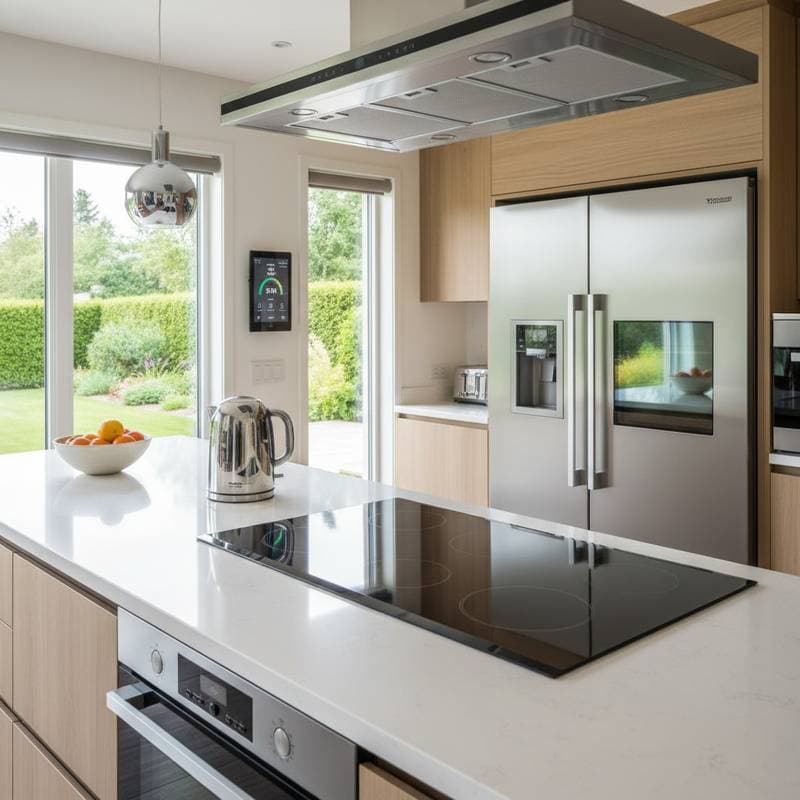From Gas to Induction: Revamp Your Kitchen Future
If you have cooked on a gas range for years, the idea of switching to induction might sound like giving up control. Many homeowners with whom I have worked worry that induction cooking will feel artificial or limited. Once they understand how it works and what it offers, however, most never look back. The shift from gas to induction represents more than following a trend; it prepares your kitchen for the next generation of safe, efficient, and sustainable cooking.
I have helped dozens of homeowners make this transition, and I have observed what succeeds and what fails. Some individuals rush into the change without upgrading their electrical system or verifying cookware compatibility. Others delay until their gas range breaks down, which increases costs and stress during replacement. Proper planning transforms switching to induction into one of the most intelligent kitchen upgrades available.
What Homeowners Often Get Wrong
Every transition involves potential pitfalls, and moving from gas to induction proves no exception. The following outlines the most frequent mistakes I encounter, along with strategies to avoid them.
1. Ignoring Electrical Requirements
Induction ranges require a dedicated circuit, typically 240 volts, with amperage that matches the appliance specifications. Homeowners sometimes attempt to connect induction cooktops to existing outlets, resulting in tripped breakers or damaged wiring. Before purchasing, consult a licensed electrician to assess your service panel. For older kitchens, an upgrade may prove necessary. This initial expense prevents overload hazards and guarantees reliable operation.
2. Buying Before Testing
Induction cooking provides a distinct experience. The surface remains cool except directly under the pan, and response occurs instantly. Some users appreciate it immediately, while others require a week to adjust. I recommend testing an induction unit prior to purchase. Appliance showrooms and home improvement stores often feature demonstration models. Bring a pot from your collection and experiment; the responsiveness becomes evident quickly.
3. Overlooking Cookware Compatibility
Induction technology functions solely with magnetic cookware. Stainless steel and cast iron generally qualify, whereas aluminum, copper, and glass do not unless equipped with a magnetic base. Perform a simple test by using a refrigerator magnet; if it adheres to the pot's bottom, compatibility exists. Otherwise, new cookware becomes essential. Budget several hundred dollars for upgraded pots and pans to avoid unexpected expenses.
4. Forgetting About Ventilation
Although induction minimizes airborne pollutants, ventilation remains crucial for managing steam, grease, and odors. Certain homeowners dismantle their range hoods under the misconception that they become obsolete, which leads to problems. Retain your existing hood or install a quieter, energy-efficient alternative. This approach preserves air quality and inhibits moisture accumulation in the kitchen.
The Real-World Costs
Homeowners frequently underestimate the total investment for this conversion. Drawing from recent projects, consider these estimates:
- Electrical Work: Upgrading panels and installing dedicated circuits ranges from several hundred dollars to thousands, based on your home's setup.
- Appliance Purchase: Entry-level induction ranges begin in the mid-thousands, with premium models featuring advanced controls surpassing double that amount.
- Cookware Replacement: Incompatible sets necessitate new purchases; magnetic stainless steel options offer optimal durability and value.
- Plumbing Work: Capping the gas line and implementing safety protocols involve modest costs, yet require professional execution.
These figures appear substantial, yet long-term savings in energy efficiency and maintenance provide compensation. Induction units demand less cleaning, experience fewer component failures, and endure longer than gas counterparts.
Addressing Common Concerns
What If the Power Goes Out?
Electric cooking relies on electricity, much like refrigerators, lighting, and other household systems. A compact backup generator suffices for brief interruptions. During extended outages, alternatives such as outdoor grills or portable induction burners powered by generators remain viable.
Will I Miss the Flame?
This concern arises most frequently as an emotional barrier. The visible flame conveys a sense of control, but true precision derives from rapid response rather than visual cues. Induction outperforms gas in reaction speed, fostering appreciation for its consistency over time.
Is It Too High-Tech?
Contemporary induction units present a sleek appearance without unnecessary complexity. Controls operate intuitively after initial familiarization with power settings. Features like child-safety locks enhance usability. Daily operation demands no advanced technical knowledge.
Steps to Switch Successfully
Begin by evaluating your kitchen's electrical capacity through a professional inspection. Select an induction range that aligns with your cooking habits, prioritizing models with precise temperature controls and easy-to-clean surfaces. Test cookware compatibility early and integrate ventilation upgrades into your plan. Engage certified professionals for electrical and plumbing modifications to ensure compliance with safety standards.
This methodical approach minimizes disruptions and maximizes benefits. Families gain a safer environment free from gas leaks and open flames, alongside reduced energy consumption that supports sustainability goals. The investment elevates home value, positioning your kitchen as a modern, efficient hub for years ahead.










